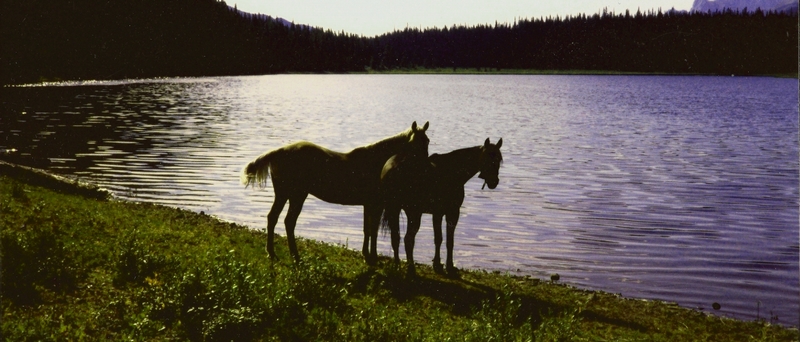The horse world is divided into a number of different factions: Hunter/Jumper, Performance or Western riding disciplines, saddle seat, cart horse, etc. There are also major age divisions, i.e., foals, or very young colts and fillies, yearlings, adult horses and senior horses. All this is critical to know in understanding how to feed a horse. There is of course, the common refrain, “Hay is for horses, but, hay is just the beginning.” Hay offers a great deal of the fiber and (depending on the type used) protein, but, most horse owners are compelled to also give their horses grain, specialized horse fed formulations and equine supplements in attempting to keep their horses shiny, ”fat” and sassy and happy. They also turn their horses out to graze at every given opportunity, to give their horse the freedom to eat the way they want to.
When it comes to horse feed, I am a complete idiot. That’s because, like most people who ride with a trainer, I have no idea what my horse eats. Oh sure, I know he gets hay, additional horse feed formulations in the form of senior horse feed, bran mash, etc. But, I don’t know how much, what brand or the science behind how my horse is fed. (Except I know he gets special supplements to help make his feet stronger.) Now, what’s really interesting is that I write about horse feed formulations and yet, if I bought a property tomorrow where I could keep my horse at home, I’d have to sit down with my horse’s veterinarian and current trainer and get a big, long, how to lesson on what to feed, how to feed, etc.
So, yesterday, I went to the tack store that the horse feeds used for my horse come from and started looking around. The interior of the store is devoted to bits, bridles, horse medications, some saddles, and a lot of horse and rider clothing. (Of course, the check-out counter is surrounded by horse treats and wouldn’t you know, they’ve come out with increasingly innovative horse treats since the last time I could afford them.) When it came to looking at how the various horse feeds are presented to consumers, I realized that you had to walk out back, behind the store, to find all the large bags of
horse feed. I went back into the store and started asking about which brands sell the best, how consumers know which brand they want, etc. and got a response I really shouldn’t have been surprised by.

Tina, the girl at the front counter said, “Well, you know, the majority of our customers ride with trainers, so, they really have no idea what their horse eats.” They might come in and buy specific equine supplements and horse treats, of course, but, when it comes to hay selection or horse feeds, most of that is coming directly from the trainer.” So, apparently, my virtual ignorance about what my horse is eating is pretty much the rule, not the exception.
What is fascinating about this is why things are set up this way. Well, the answer is easy. Because horse trainers, depending on the discipline, are responsible for helping keep horses worth between $0 and $1,000,000.00 or more healthy. They are our virtual parents when we ride with them. They tell us how to do everything. What horse to buy, how to ride the horse, what tack to buy, what show clothes to buy, what shows to go to, who to use as our veterinarian, who to use as our shoer, etc. And, feeding a horse is no joke. If you don’t know what you’re doing, you run an increased risk of having your horse become a victim of a problem like laminitis or equine colic, both, serious issues that can ultimately prove fatal.
In the days and weeks to come, I’m going to try and learn more and more about horse feed, so, that I could in theory, care for a horse on my own. Why? Because 85% of horse owners are the final decision makers about their horse’s diet. And, given the energy I put into becoming a better horse woman, this is something I should understand, regardless of whether I am making the final decisions regarding my horse’s diet.

